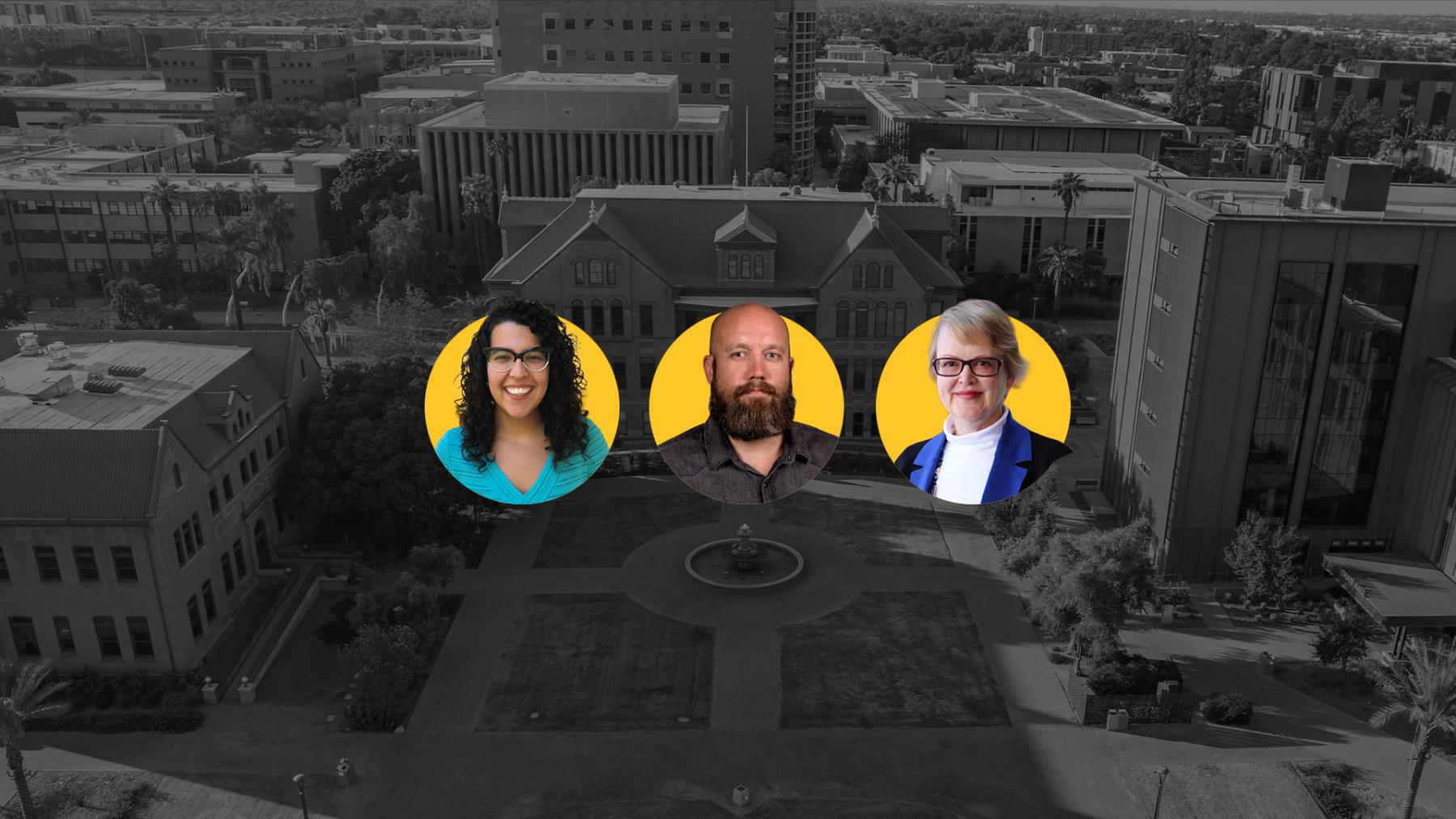
ASU PhD student Mariana Lanzarini-Lopes is cleaning drinking water with light
At 19, Mariana Lanzarini-Lopes found herself far from home in the Republic of Zambia, a south-central African country named after one of the longest rivers on the continent.
She was there through an undergraduate international program, and for three summer months, she filled her days by teaching high school physics and taking part in an after-school program open to children in the neighboring village of Lubwe.
“We would play Ultimate Frisbee with them, we would draw, we would have different games, teach them English, learn Bemba from some of them,” Lanzarini-Lopes said, reflecting on her hours spent after school.
It was there she met a five-year-old boy who, about halfway through her trip, contracted dysentery. She and her sister stayed with the boy and his mother in a shabby hospital absent a doctor — within two days he was dead.
Dysentery is typically spread through bacteria-contaminated food or water and is most fatal in children under the age of five, but to her, it didn’t make sense that she herself hadn’t gotten sick.
“How did he die from the same water I’m drinking?” Lanzarini-Lopes remembers journaling over and over. “The difference, of course, is that we had treatment.”
Memories of water
As a young girl growing up in Brazil, Lanzarini-Lopes noticed that her neighbors in the adjoining favela drank tap water while her middle-class family drank water from “big green tubs.” When she asked her parents why they drank different water, they told her she was too young to understand, she eventually realized that the tap water was not safe.
When she moved to the United States at the age of 10, it was like arriving at another planet — Americans actually drank from the faucet.
The impact of a preventable death
But her experience in Zambia stirred something in her. Lanzarini-Lopes came to believe that the boy’s death was preventable, a direct result of systemic poverty and unequal access to clean water. And she wanted to help change that.
“I really started to think about what I wanted to do with my degree and how I can have an impact in the world,” she said.
That impact is coming into focus. Now 26 and a fifth-year PhD candidate studying environmental engineering at ASU, Lanzarini-Lopes works with Paul Westerhoff at the Nanosystems Engineering Research Center for Nanotechnology Enabled Water Treatment or NEWT. Shortly after joining the lab in 2015, she went to work trying to sustainably clean water with light.
The concept of using light to clean water isn’t new, though it has been relatively inefficient to this point. But with advancing nanotechnology, Lanzarini-Lopes has found real success by pairing LEDs, like those used in Christmas lights and televisions, with optical fibers.
“It’s like making a really thin, flexible glow stick that you can stretch out and arrange in any sort of reactor configuration,” she said. “You can essentially distribute photons from this one light source into literally any configuration you want.”
Technology that flexible and efficient has the potential to change — and save — lives. Lanzarini-Lopes envisions her work being utilized anywhere from camping bladders to the pipes in your home. Years from now, she hopes it might even replace the need for chlorine water treatments altogether.
Lanzarini-Lopes’ research has been well-received during her time at ASU. For the past two years, she has been named an ARCS Foundation Phoenix Scholar. A highly competitive award, the ARCS Foundation seeks to recognize outstanding PhD candidates advancing science and technology. The Graduate College at ASU works closely with the ARCS Foundation to mutually support ASU scholars who apply for the award each year.
And earlier this year, NASA took notice of Lanzarini-Lopes’ work, too, giving her a sizable grant to design a prototype to sterilize the pipes and bladders used in the International Space Station.
“NASA came up and said ‘hey, we’re interested in this and we can provide some funds to basically make this happen,’” she said. “It made me really excited, it made my advisor really excited, and now we no longer see [the project] as something that’s going to die when I leave.”
Since receiving funding, Lanzarini-Lopes and Westerhoff have added three undergraduate students and a graduate student to the project. The growing team even recently met with a company that specializes in optical fiber manufacturing about a possible partnership.
“I do see it really having a breakthrough in light-driven technologies,” Lanzarini-Lopes said. “NASA is a way for us to really develop this product, but it doesn't have to end there.”
Now, as she nears her dissertation defense, Lanzarini-Lopes hopes her lifelong fascination might someday help prevent some of the world’s deadliest diseases.
More stories from the Graduate Insider

Finding your flow: Managing the graduate writing process
Graduate writing can feel like a marathon—long, demanding, and full of unexpected detours. But as Tristan Rebe, Program Manager for the Graduate Writing Center, reminded students in the Grad15: Managing the Writing Process webinar, writing is not about perfection—it’s about progress. “The best dissertation is a done dissertation,” Rebe said, quoting Robert Frost: the best way out is through.

Promoting resilience and well-being in Ghana — and across the globe

From practice to presentation: How to deliver a winning faculty job talk
Giving a job talk can feel like the most high-stakes presentation of your academic job search. It’s not just a research seminar—it’s your opportunity to demonstrate vision, communication skills, and fit within a department. In a recent Lunch and Learn, faculty members Associate Professor in School of International Letters and Cultures, Anita Huizar-Hernandez, Professor in School of Life Sciences Jeffrey Jensen, and Professor in Department of Physics Patricia Rankin shared concrete strategies to help graduate students and postdocs succeed as future faculty candidates.